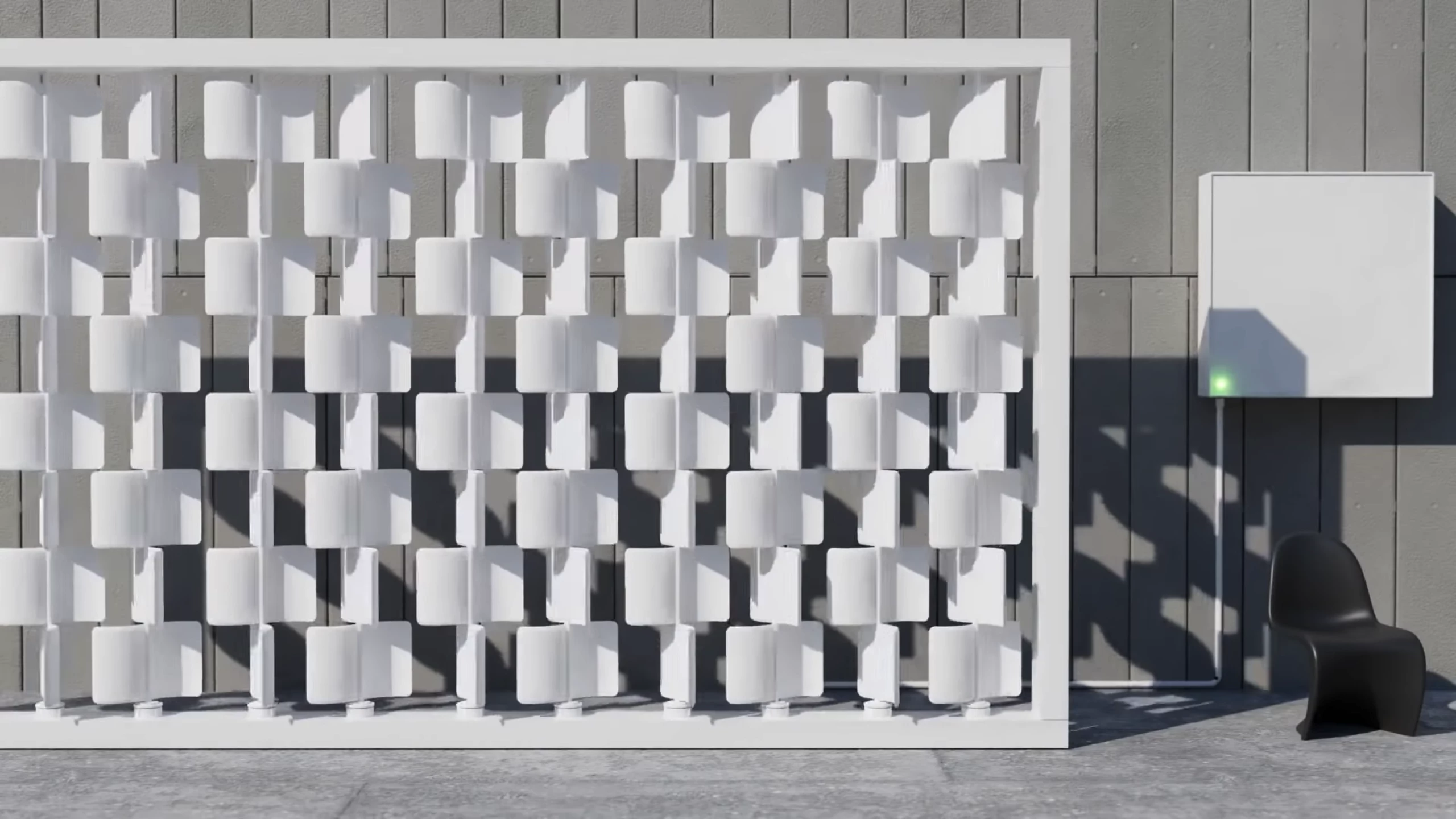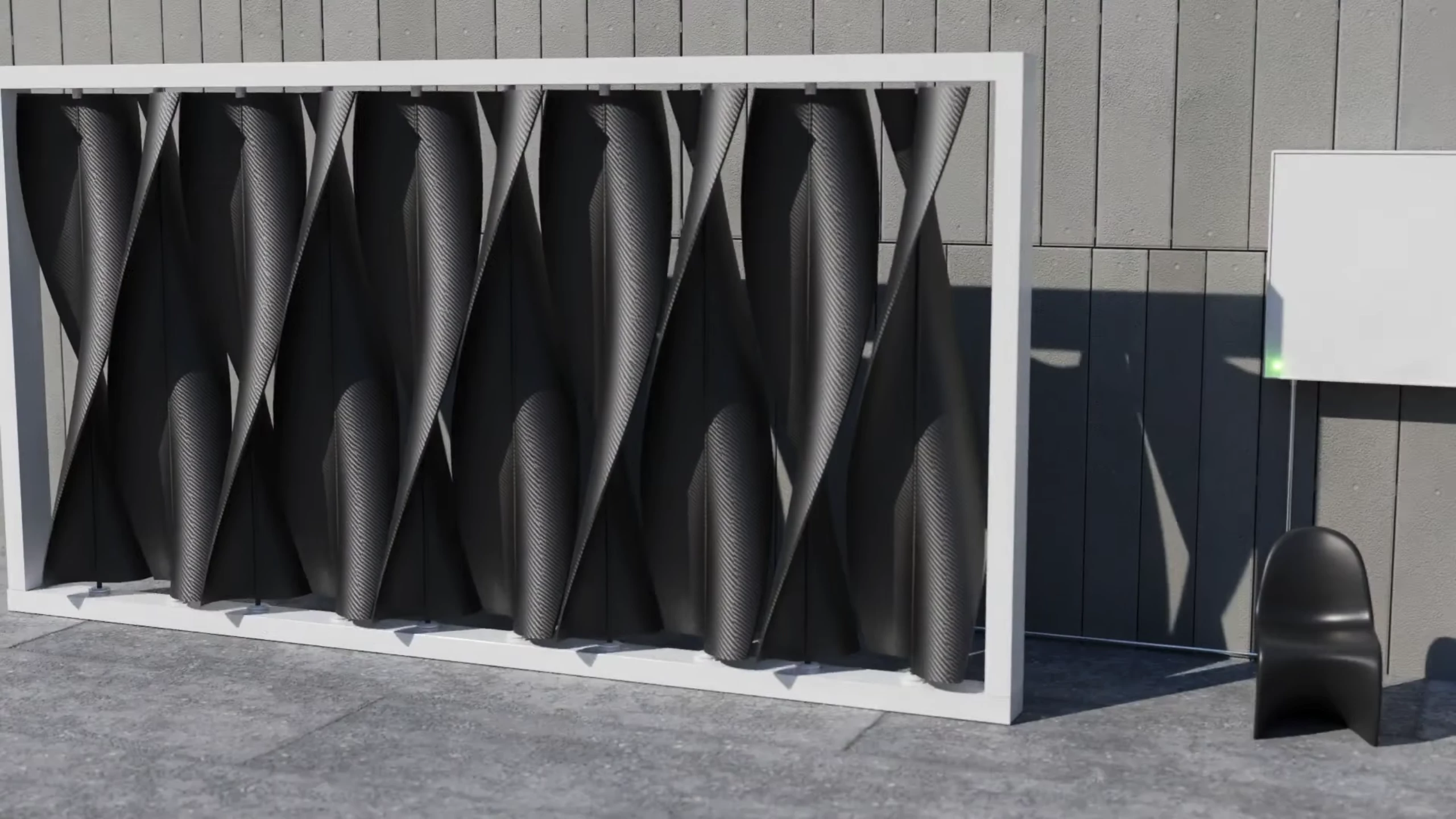NYC-based designer Joe Doucet doesn't see why renewable energy generation shouldn't actively make a home more beautiful, so he's putting together a series of "kinetic walls" using rotary wind turbines to achieve some hypnotic visual effects.
Each wall would feature some 25 vertical turbines, each connected to a 400-watt generator for a total peak power output of 10 kW. Like a rooftop solar setup, these could either be connected to the grid, or run through a battery system for storage. Doucet says they'll be "almost silent," producing "no more noise than a gentle whirling," and safe for use around children, since there are no pinch-points in the rotation and even a little one could easily stop the lightweight blades from turning.
Capable of catching the wind from any direction but the vertical, they could run as a standalone system or be paired with a solar array to generate power at overlapping times. Doucet says he wants to keep these walls "very affordable," and is "interviewing potential partners to bring this thing to make." Some typos have a strangely musical quality to them, and that's one of 'em.

They're undeniably striking to look at, but before anyone gets too excited, let's examine how they're likely to perform if they ever break free from Joe Doucet's CAD software and try their luck in the real world.
Ten kilowatts sounds pretty good; a useful amount of power, considering that the average US home uses around 30 kWh of energy daily. Ten kW, delivered all day and night, would contribute a very handy 240 kWh daily; you could power half your street.
But here's the problem: wind doesn't work that way. The average capacity factor for land-based wind turbines in the US is around 35 percent, so if these kinetic walls performed at a similar capacity factor to the whopping big three-blade horizontal-axis industrial wind turbines dotted along windy American coastlines, you could expect more like 84 kWh a day.
But they won't, because these vertical-axis turbines perform a lot less efficiently. Those boring-looking three-bladers always have all their blades in the wind catching a ride, while vertical-axis turbines by their very design can only have one surface catching the wind at a time. And they lose more power as the wind blows on the back of the blade coming back around.

They're also designed to be mounted at ground level around houses, rather than high up in the air near strong coastal winds. So the breezy pickings will be slim in most locations, and that's worse news than it sounds, since wind power is proportional to the cube of wind speed. And heck, while we're at it, they're designed to look cool, which means there's undoubtedly a less funky looking solution that would work better.
Basically, Doucet's wind turbine walls look pretty neat, but we'd be surprised if they made a useful amount of power or sold cheaply enough to pay for themselves quicker than a solar array. They're probably best viewed as a kinetic sculpture, with any energy output being a bonus. Indeed they're most likely the kind of "dodgy wind" design Mike Barnard warned us about so eloquently back in 2013. But as always with these kinds of things, we'd be delighted to be proven wrong.
Check out a video below.
Source: Joe Doucet x Partners
Ed's note: this article has been updated to correct a math error. It originally stated that 10 kW running for 24 hours would produce 24 kWh. Thanks to our readers in the comment section for catching it!







